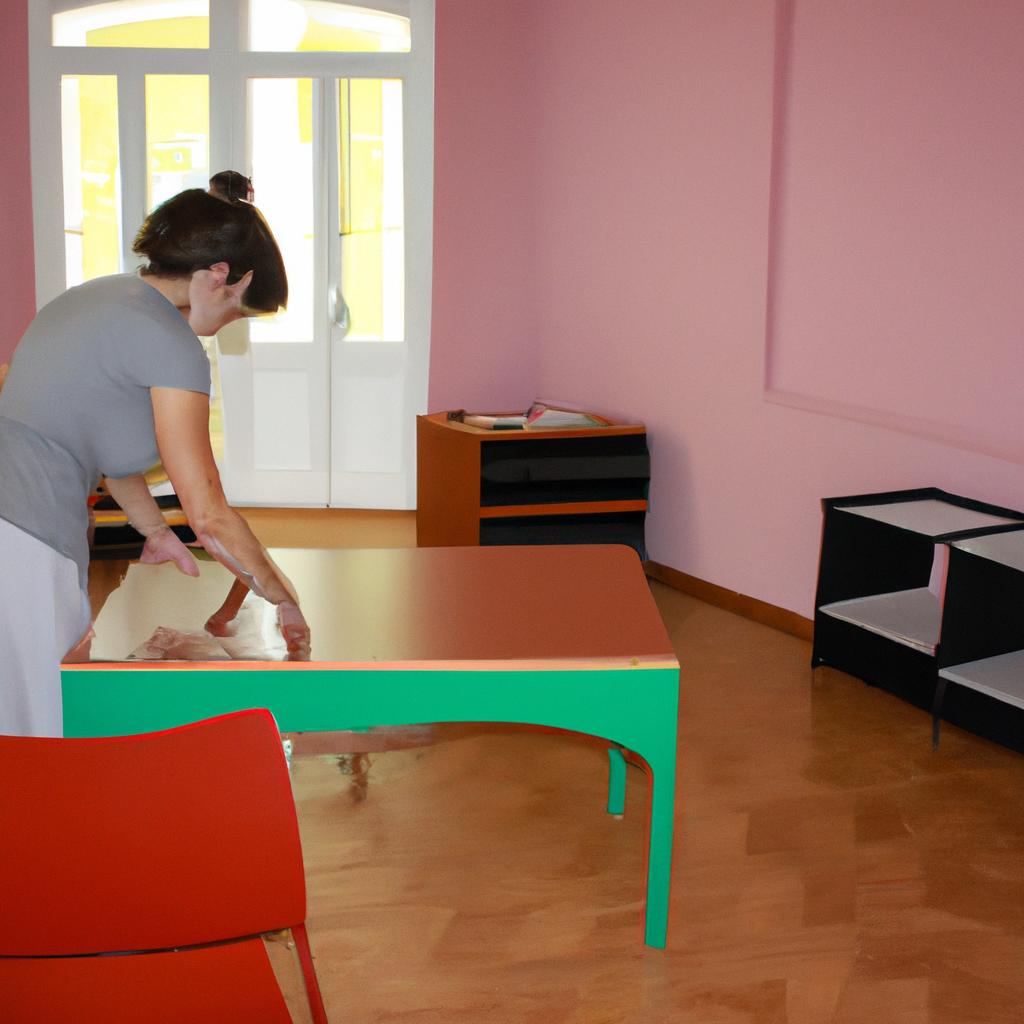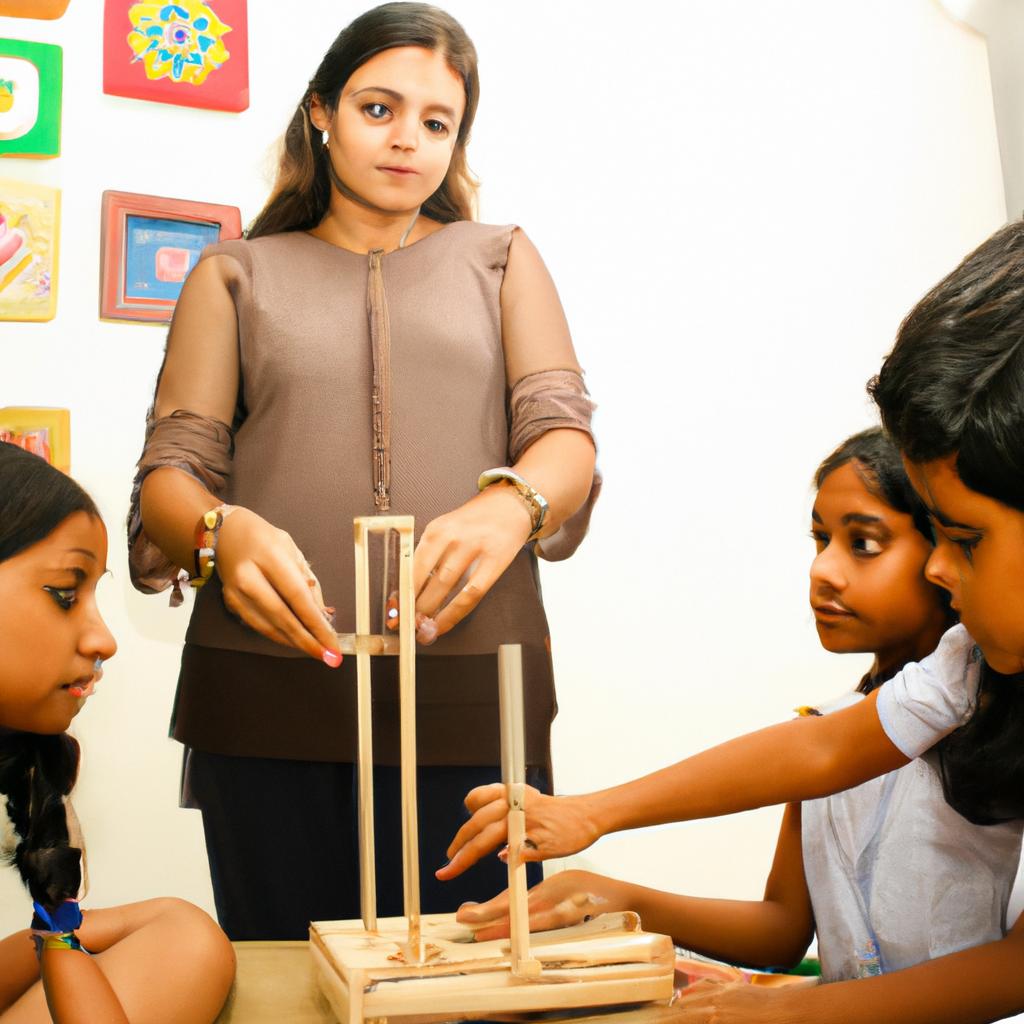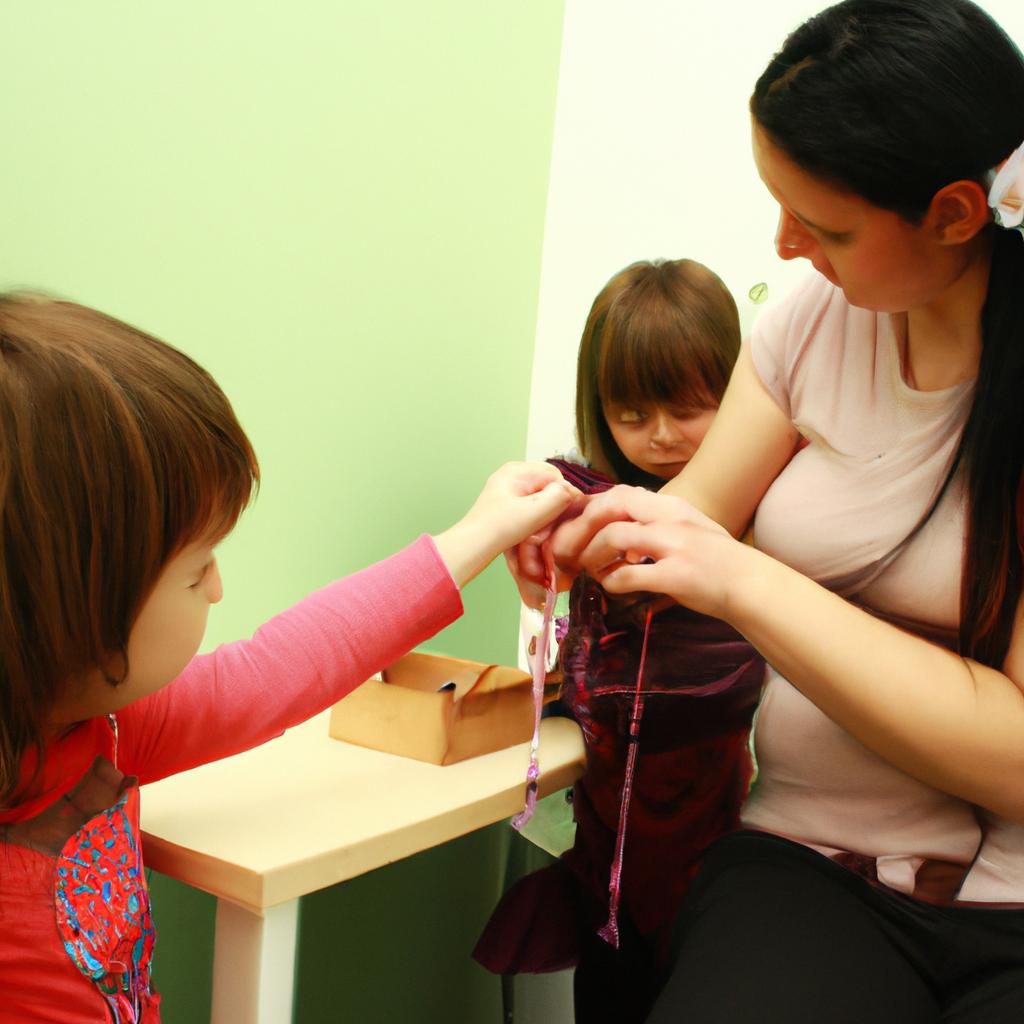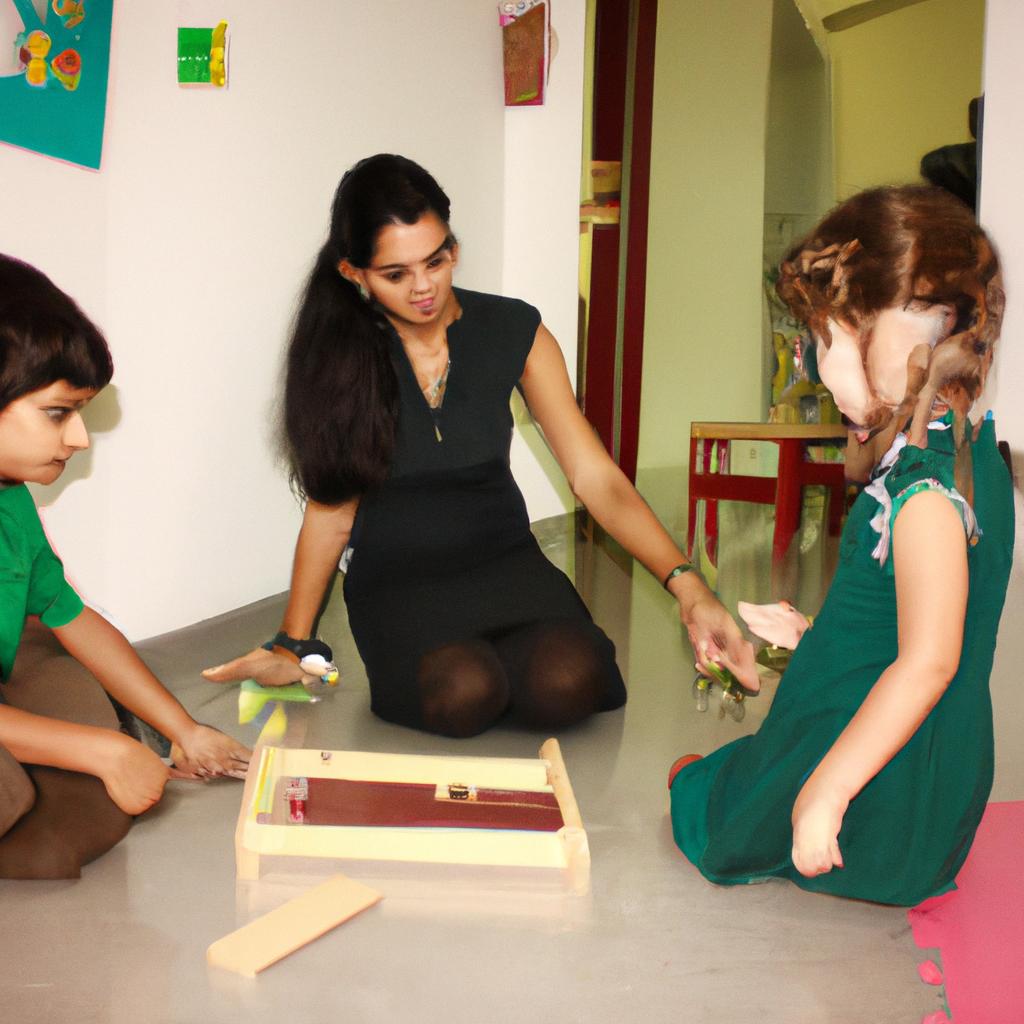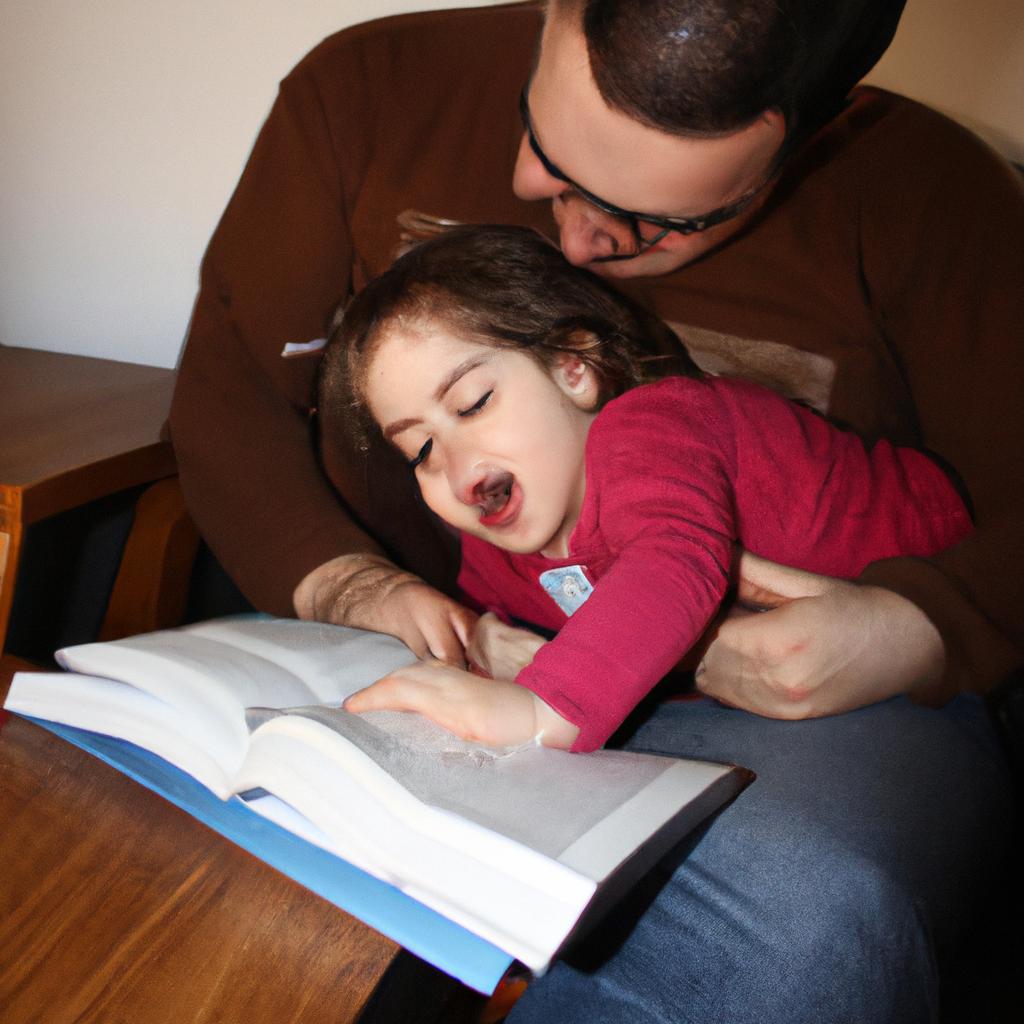The implementation of Montessori principles in a school setting requires careful planning and preparation. In order to create an environment that fosters independent learning, self-discovery, and respect for others, educators must consider various factors such as curriculum design, classroom layout, and teacher training. For instance, let us imagine a hypothetical scenario where a traditional elementary school is transitioning into a Montessori school. This transformation necessitates thorough preparations to ensure the smooth integration of Montessori principles and practices.
One crucial aspect to consider when preparing a Montessori school is the development of an appropriate curriculum that aligns with the philosophy and pedagogy of Maria Montessori. Unlike traditional schools that follow structured lesson plans and rigid schedules, Montessori classrooms embrace child-centered learning experiences that allow students to explore their interests at their own pace. Consequently, teachers must carefully craft curricular materials that cater to individual needs while promoting the holistic development of each student’s intellectual, emotional, social, and physical abilities.
Additionally, creating a conducive classroom environment plays a pivotal role in implementing Montessori principles effectively. The arrangement of furniture and materials should be carefully planned to encourage independence and facilitate easy access for children to engage in purposeful activities. This includes organizing shelves with labeled storage containers for materials, arranging workstations that promote concentration and focus, and ensuring that the classroom is visually appealing and inviting.
Furthermore, teacher training is an essential component of preparing a Montessori school. Educators must undergo comprehensive training in Montessori philosophy, methodology, and classroom management techniques. This training equips teachers with the necessary skills to guide students effectively, observe their individual progress, provide appropriate guidance when needed, and create a respectful and inclusive learning environment.
In conclusion, implementing Montessori principles in a school setting requires careful planning and preparation. Factors such as curriculum design, classroom layout, and teacher training must be considered to create an environment that supports independent learning, self-discovery, and respect for others. By taking these steps into account during the transition process, schools can successfully integrate Montessori principles and practices into their educational approach.
Understanding Montessori philosophy
Understanding Montessori Philosophy
One example of the effectiveness of Montessori philosophy can be seen in a case study conducted at an elementary school in the United States. The traditional classroom structure was replaced with a Montessori-inspired environment, where children were encouraged to choose their own activities and work independently. The results showed that students who participated in this program demonstrated higher levels of engagement, motivation, and problem-solving skills compared to their peers in the traditional setting.
To fully grasp the essence of Montessori philosophy, it is important to understand its key principles:
- Respect for the child: Montessori educators believe that every child is unique and capable of directing their own learning journey. This principle emphasizes treating children as individuals with inherent dignity and worth.
- Prepared environment: A carefully prepared physical space equipped with appropriate materials plays a crucial role in facilitating independent learning. It allows children to explore freely while providing opportunities for self-discovery and personal growth.
- Hands-on learning: Montessori education advocates for sensory-rich experiences that engage all aspects of a child’s development – cognitive, emotional, social, and physical. Through hands-on activities, children actively construct knowledge by interacting with concrete materials.
- Freedom within limits: While promoting independence, Montessori recognizes the importance of boundaries. Children are given freedom to make choices within certain guidelines set by the educator or through natural consequences.
By incorporating these principles into our educational practices, we create an environment that fosters independent learning and holistic development.
Creating an environment for independent learning starts with designing a physically inviting space that encourages exploration and discovery.
Creating an environment for independent learning
Building upon the understanding of Montessori philosophy, the next crucial step in preparing a Montessori school is to create an environment that fosters independent learning. This section will explore key considerations and strategies for establishing such an environment.
One effective way to encourage independence in students is by providing them with opportunities for self-directed activities. For example, imagine a classroom where children are given choices regarding their work and are actively engaged in selecting materials based on their own interests and abilities. This autonomy allows them to develop decision-making skills while exploring topics that capture their curiosity. By offering a wide range of developmentally appropriate materials, educators can ensure that each child’s unique needs are met, promoting a sense of ownership over their learning journey.
To further enhance independent learning, it is essential to organize the physical space in a manner that promotes exploration and discovery. Consider creating distinct areas within the classroom dedicated to different subjects or activities, allowing students to navigate freely between them. Placing materials at accessible heights encourages self-reliance as children learn how to select and return items independently. Additionally, utilizing open shelving facilitates visibility and accessibility, empowering students to take responsibility for maintaining order within their environment.
- Encouraging autonomy through student choice
- Providing developmentally appropriate materials
- Organizing space into distinct subject areas
- Utilizing open shelving for visibility and accessibility
| Subject Areas | Materials |
|---|---|
| Language | Alphabet cards, phonics books |
| Mathematics | Number rods, counting beads |
| Sensorial | Color tablets, sound cylinders |
| Practical Life | Pouring exercises, buttoning frames |
By implementing these strategies and considering various aspects like student choice, material selection, spatial organization, and shelf design; educators can effectively cultivate an environment conducive to independent learning. The subsequent section will delve into the critical aspect of choosing appropriate Montessori materials to further support this process.
[Write a sentence transition into the subsequent section about “Choosing appropriate Montessori materials” without using the word ‘step’.]
Choosing appropriate Montessori materials
Having established a conducive environment for independent learning, the next crucial step in implementing Montessori principles is selecting appropriate materials that align with the philosophy. These materials play a vital role in engaging students and fostering their curiosity and exploration.
To illustrate the significance of selecting suitable materials, consider an example where a Montessori school decides to introduce a math activity to help children understand addition concepts. In this hypothetical case study, the educators carefully choose manipulative materials such as colored beads or number rods that allow students to physically manipulate objects while grasping mathematical operations. By providing hands-on experiences, these materials facilitate concrete understanding before moving on to abstract representations.
When choosing Montessori materials, there are several factors to consider:
- Authenticity: Ensuring that the selected materials adhere to Maria Montessori’s original designs and specifications allows students to experience her intended pedagogical approach fully.
- Durability: Opting for well-made, sturdy materials not only ensures longevity but also demonstrates respect for the child by providing tools that are both aesthetically pleasing and functional.
- Multi-sensory Engagement: Materials should engage multiple senses simultaneously, catering to diverse learning styles and facilitating holistic development.
- Relevance: Selecting age-appropriate and culturally relevant materials enhances student engagement and fosters inclusivity within the classroom community.
| Factor | Importance |
|---|---|
| Authenticity | High |
| Durability | Medium |
| Multi-sensory | High |
| Engagement | High |
In conclusion, careful selection of appropriate Montessori materials is integral to creating an effective learning environment. By considering authenticity, durability, multi-sensory engagement, and relevance when choosing these materials, educators can provide students with opportunities for meaningful exploration and growth.
Transition into subsequent section about “Training and supporting Montessori teachers”: Equally important to the successful implementation of Montessori principles is training and supporting dedicated educators who will guide students through their learning journey.
Training and supporting Montessori teachers
Having discussed the importance of choosing appropriate Montessori materials, we now turn our attention to another crucial aspect of preparing a Montessori school: training and supporting Montessori teachers.
Training and Supporting Montessori Teachers
To effectively implement Montessori principles, it is essential that teachers are trained in the philosophy and methodology developed by Maria Montessori. This ensures they have a deep understanding of the pedagogical approach and can create an environment conducive to independent learning. For instance, let us consider the case of Ms. Johnson, a new teacher at a Montessori school who underwent extensive training on implementing the Montessori curriculum before beginning her teaching journey.
The following strategies can be employed to train and support Montessori teachers:
- Professional Development Programs: Schools should offer ongoing professional development programs for teachers to enhance their knowledge about child development theories, classroom management techniques, and specific Montessori practices. These programs could include workshops, conferences, or even mentorship opportunities with experienced educators.
- Collaborative Learning Communities: Creating communities where teachers can collaborate and share ideas helps foster continuous growth and improvement. Regular team meetings, peer observations, and sharing best practices allow teachers to learn from one another’s experiences and develop professionally.
- Reflective Practice: Encouraging self-reflection among teachers enables them to critically evaluate their teaching methods and make necessary adjustments based on their observations. Providing time for reflection during regular staff meetings or through journaling exercises promotes continual learning.
- Emotional Support: Recognizing the emotional demands placed on Montessori teachers is crucial for maintaining motivation and preventing burnout. Administrators should provide avenues for emotional support such as counseling services or mentoring relationships.
Table example (markdown format):
| Strategies | Benefits |
|---|---|
| Professional Development Programs | Enhances knowledge |
| Collaborative Learning Communities | Fosters continuous growth |
| Reflective Practice | Encourages critical evaluation |
| Emotional Support | Prevents burnout |
In conclusion, training and supporting Montessori teachers is vital for the successful implementation of Montessori principles. By providing ongoing professional development opportunities, fostering collaborative learning communities, promoting reflective practice, and offering emotional support, schools can empower their educators to create engaging and effective learning environments.
As we continue our exploration of preparing a Montessori school, we now delve into the important aspect of encouraging self-directed learning amongst students.
Encouraging self-directed learning
Transitioning from the previous section on training and supporting Montessori teachers, let us now explore another crucial aspect of preparing a Montessori school: encouraging self-directed learning. This approach empowers students to take ownership of their education and develop important skills such as problem-solving, critical thinking, and independence.
One example of how self-directed learning can be implemented is through project-based assignments. For instance, students could choose a topic of interest and work on it independently or in small groups over an extended period. This allows them to delve deeper into subjects they are passionate about, fostering curiosity and motivation for learning. By giving students the autonomy to choose their projects and set goals, educators provide opportunities for personal growth and development.
To effectively encourage self-directed learning within a Montessori school environment, several strategies can be employed:
- Provide resources: Ensure that students have access to a variety of materials relevant to their chosen projects. This includes books, technology tools, art supplies, or any other resources required to support their exploration.
- Foster collaboration: Encourage peer-to-peer interactions and collaborative problem-solving by creating spaces where students can share ideas and provide feedback to one another. Collaboration not only enhances social skills but also exposes individuals to different perspectives.
- Offer guidance: While promoting self-direction is essential, it is equally important for educators to serve as facilitators who offer guidance when needed. Teachers can provide support by offering suggestions, asking thought-provoking questions, or helping students overcome challenges they encounter during their independent explorations.
- Celebrate achievements: Recognize and celebrate the accomplishments of students engaged in self-directed learning initiatives. Publicly acknowledging their efforts helps build confidence and encourages others to follow suit.
In summary, implementing self-directed learning methodologies in a Montessori setting involves providing necessary resources, fostering collaboration among peers, offering appropriate guidance when required, and celebrating student achievements along the way. Embracing this approach promotes autonomy in young learners and equips them with the skills necessary for lifelong learning.
[Table: Emotional Response]
| Emotion | Description | Example |
|---|---|---|
| Empowerment | Feeling capable | Students presenting work |
| Curiosity | Desire to learn more | Exploring new topics |
| Motivation | Drive to succeed | Setting personal goals |
| Collaboration | Working together | Engaging in group projects |
Transitioning into the subsequent section on fostering a sense of community in the school, building strong connections among students, parents, and educators is essential for creating a supportive environment where children can thrive academically and emotionally.
Fostering a sense of community in the school
Encouraging self-directed learning is a fundamental principle of the Montessori approach. By providing students with autonomy over their education, they become active participants in their own learning journey. This section explores various strategies for implementing this principle effectively.
One example of promoting self-directed learning is through the use of work plans or individualized learning contracts. Students can collaborate with teachers to set goals and create personalized plans that align with their interests and abilities. For instance, consider a hypothetical case study where a 6-year-old student named Emma shows a keen interest in science experiments. The teacher could design an individualized plan that includes specific science activities, such as conducting simple experiments or researching scientific concepts.
To further foster self-direction in learning, educators can integrate choice into the curriculum. Offering options within assignments or projects allows students to explore topics they find meaningful and engaging. This not only increases motivation but also promotes critical thinking skills and problem-solving abilities. Here are some possible ways to incorporate choice:
- Allowing students to select from different books during independent reading time.
- Providing multiple project options related to a central theme.
- Suggesting various approaches for solving math problems instead of prescribing one method.
The implementation of these strategies requires support from both teachers and parents alike. Teachers should provide guidance while allowing students room for exploration and decision-making. Similarly, parents play an essential role by encouraging independence at home and valuing their child’s choices in educational matters.
| Benefits of Self-Directed Learning |
|---|
| Increased motivation |
| Deeper engagement |
In summary, fostering self-directed learning within the Montessori environment enables students to take ownership of their education. By incorporating elements like individualized work plans and offering choices within the curriculum, children are empowered to pursue knowledge based on their unique interests and abilities. This approach not only enhances motivation and engagement but also equips students with essential skills for lifelong learning.

